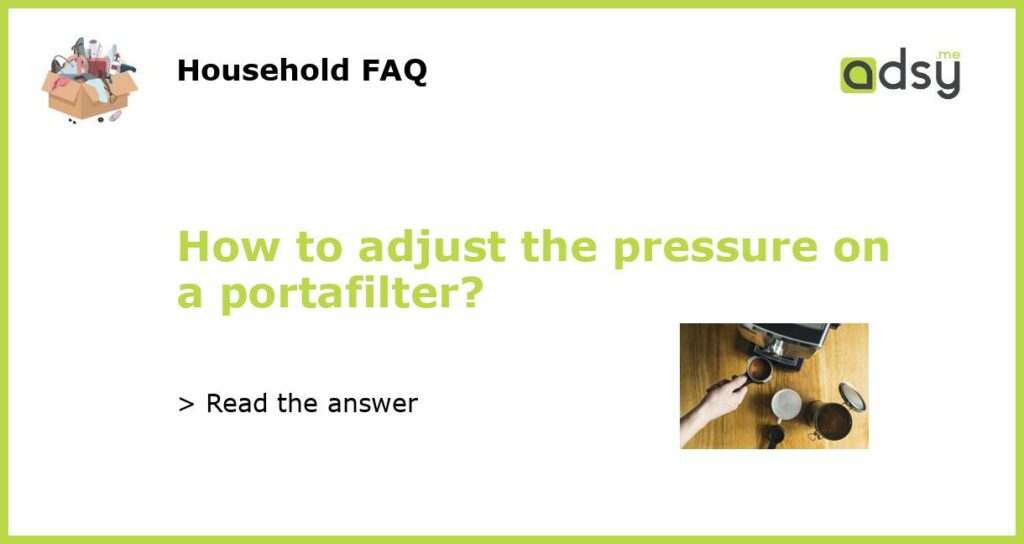Adjusting the pressure on a portafilter
Adjusting the pressure on a portafilter is an essential skill for making the perfect espresso. The pressure at which water is forced through the coffee grounds can greatly impact the flavor and extraction of the coffee. In this article, we will discuss the steps to adjust the pressure on a portafilter and achieve the desired results.
Step 1: Understanding the importance of pressure
Before adjusting the pressure on a portafilter, it is important to understand why it matters. The pressure exerted on the coffee grounds during the brewing process affects the extraction and taste of the espresso. Too much pressure can result in over-extraction, leading to a bitter taste, while too little pressure can result in under-extraction, resulting in a weak and watery coffee. Adjusting the pressure allows for better control over the extraction process and allows the barista to achieve the desired flavor profile.
Step 2: Identifying the type of machine
The method for adjusting the pressure on a portafilter can vary depending on the type of espresso machine being used. There are three main types of espresso machines: manual, semi-automatic, and automatic. Manual machines require the barista to manually control the pressure by adjusting the force applied when pulling the lever. Semi-automatic machines have a built-in pump that controls the pressure automatically, but some models allow for manual adjustment. Automatic machines have a pre-set pressure that cannot be adjusted. Knowing the type of machine you have will help you determine the appropriate steps for adjusting the pressure on your portafilter.
Step 3: Adjusting the pressure on a manual machine
If you are using a manual espresso machine, the pressure on the portafilter is controlled by the force applied when pulling the lever. To adjust the pressure, you will need to experiment with the force applied during the extraction process. Start by pulling a few shots with different levels of force to see how it affects the flavor and extraction. If the coffee is too bitter or over-extracted, reduce the force applied. If the coffee is too weak or under-extracted, increase the force. Remember to make small adjustments and take note of the results until you achieve the desired flavor.
Step 4: Adjusting the pressure on a semi-automatic machine
For semi-automatic machines with manual pressure adjustment, there is usually a pressure gauge that indicates the pressure being exerted on the portafilter. The ideal pressure for espresso extraction is between 9 to 10 bars. To adjust the pressure, start by determining the current pressure reading on the gauge. If it is too high, you can manually adjust the pressure by adjusting the pump’s pressure regulating screw. Loosening the screw will reduce the pressure, while tightening it will increase the pressure. Make small adjustments and pull a few shots to test the flavor and extraction until you achieve the desired results.
Step 5: Automatic machines with no pressure adjustment
For automatic machines with no pressure adjustment, the pressure is preset by the manufacturer and cannot be adjusted. In this case, you can still control the pressure indirectly by adjusting the grind size and tamping pressure. A finer grind will increase the resistance and slow down the flow, while a coarser grind will decrease the resistance and speed up the flow. Additionally, adjusting the tamping pressure can also impact the resistance and extraction. Experimenting with these variables will help you achieve the desired flavor even without direct control over the pressure.






